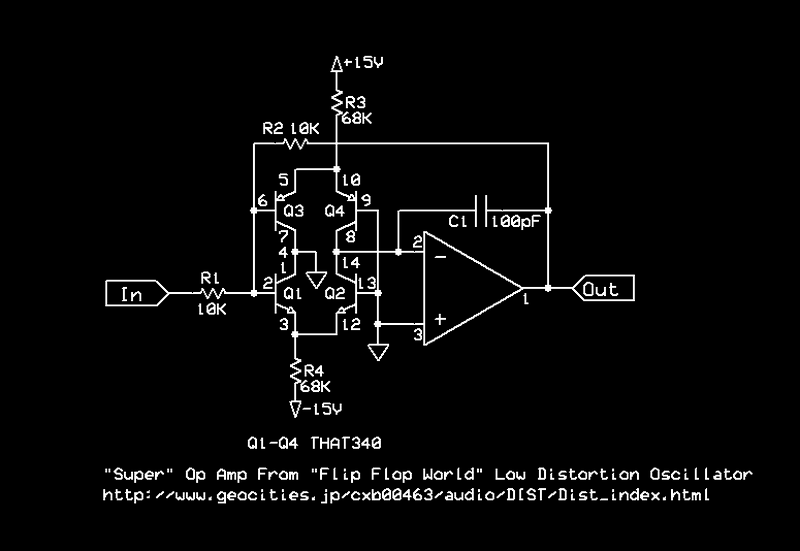I am using a THAT2180 pre-trimmed VCA.
I prefer them over the 2181 because they eliminate a trim and the on-chip Zener-zap trim of the 2180 has better THD tempco.
The VCA is in parallel with a non-inverting path and
subtracts a tiny fraction of the signal with the VCA typically operating with about 50-60 dB attenuation.
The reduction in VCA input current, by making Rin 100KΩ instead of the typical 20K, doesn't significantly affect output noise which is low.
By utilizing the current output of the VCA to subtract the VCA doesn't add an I-V op amp providing additional noise savings.
The VCA's even-order distortion becomes so low it's beneath the noise floor of the oscillator's op amps.
When the output is unloaded I'm not seeing any THD popping out of the noise floor line at -140 to -145 dBu.
This is a 132 kpt 20 sample avg FFT of the notch filter output.
There is +40 dB post-filter gain; -100 dBu is -140 dBu.
The output level is +12 dBu (single-ended) and there is no load other than the notch filter.
With a +12 dBu carrier the noise floor line is actually -152 dBc at 2 kHz. (Includes post-filter amp noise.)
There is no THD-2 or THD-3 visible.
The notch filter insertion loss is about -9 dB at 2 kHz and -5.5 dB at 3 kHz.
The 1 kHz is notched by about -92 dB.
It's reasonably safe to say that THD-2 is no more than -143 dBc and that THD-3 is no more than -147 dBc.
 Low Distortion Oscillator with Composite Op Amps Notch Out +12dBu Out No Load
Low Distortion Oscillator with Composite Op Amps Notch Out +12dBu Out No Load
Loaded outputs are a different story...




